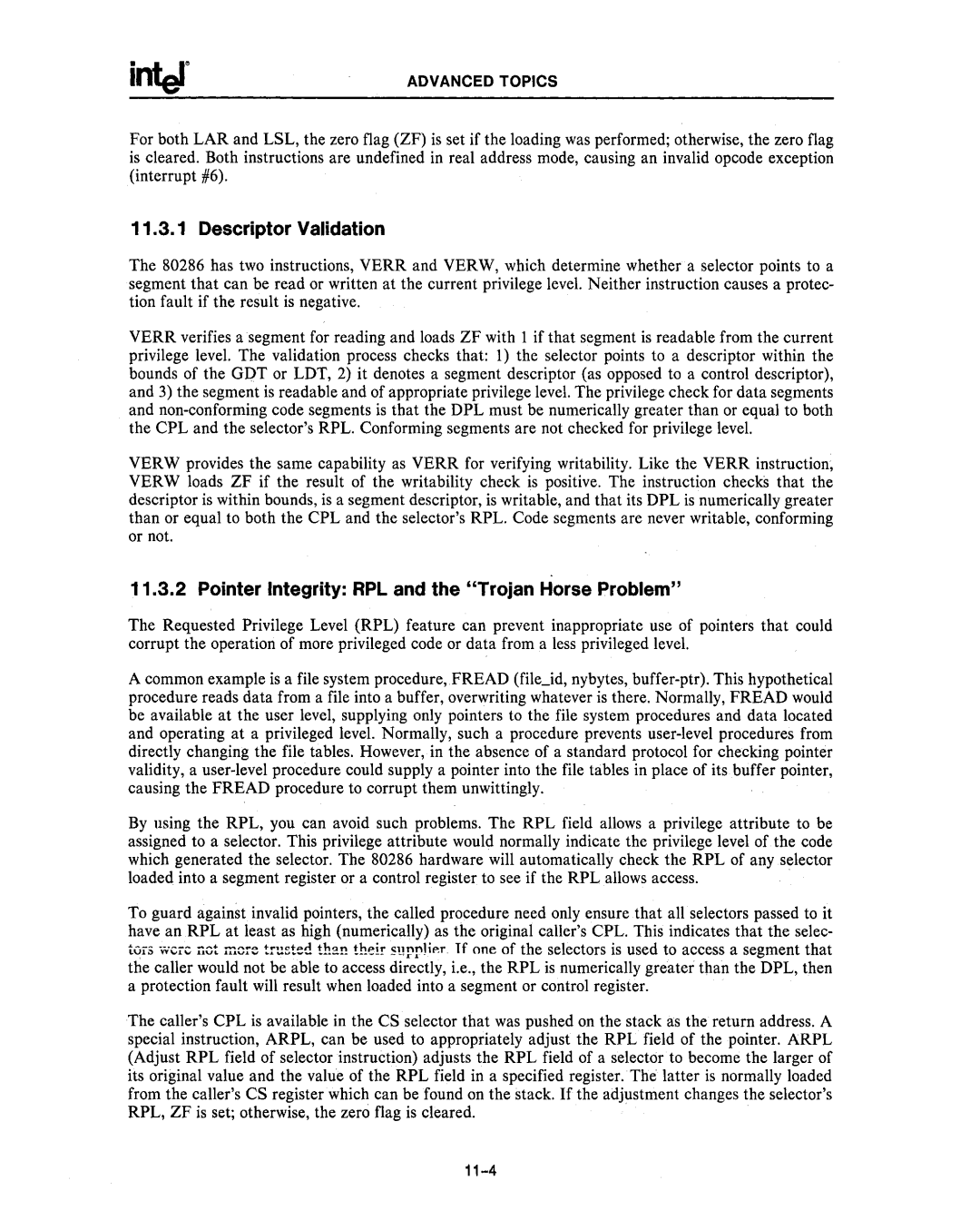
ADVANCED TOPICS
For both LAR and LSL, the zero flag (ZF) is set if the loading was performed; otherwise, the zero flag is cleared. Both instructions are undefined in real address mode, causing an invalid opcode exception (interrupt #6).
11.3.1 Descriptor Validation
The 80286 has two instructions, VERR and VERW, which determine whether a selector points to a segment that can be read or written at the current privilege level. Neither instruction causes a protec- tion fault if the result is negative.
VERR verifies a segment for reading and loads ZF with 1 if that segment is readable from the current privilege level. The validation process checks that: 1) the selector points to a descriptor within the bounds of the GDT or LDT, 2) it denotes a segment descriptor (as opposed to a control descriptor), and 3) the segment is readable and of appropriate privilege level. The privilege check for data segments and
VERW provides the same capability as VERR for verifying writability. Like the VERR instruction, VERW loads ZF if the result of the writability check is positive. The instruction checks that the descriptor is within bounds, is a segment descriptor, is writable, and that its DPL is numerically greater than or equal to both the CPL and the selector's RPL. Code segments are never writable, conforming or not.
11.3.2 Pointer Integrity: RPL and the "Trojan Horse Problem"
The Requested Privilege Level (RPL) feature can prevent inappropriate use of pointers that could corrupt the operation of more privileged code or data from a less privileged level.
A common example is a file system procedure, FREAD (file_id, nybytes,
By llsing the RPL, you can avoid such problems. The RPL field allows a privilege attribute to be assigned to a selector. This privilege attribute would normally indicate the privilege level of the code which generated the selector. The 80286 hardware will automatically check the RPL of any selector loaded into a segment register or a control register to see if the RPL allows access.
To guard against invalid pointers, the called procedure need only ensure that all selectors passed to it have an RPL at least as high (numerically) as the original caller's CPL. This indicates that the selec- Lvi'5 ',;,'Ci'C i'iGt ir.Gre tr~eted t!"!~!! t!"!eir 5l'vr1ip.T If one of the selectors is used to access a segment that the caller would not be able to access directly, i.e., the RPL is numerically greater than the DPL, then a protection fault will result when loaded into a segment or control register.
The caller's CPL is available in the CS selector that was pushed on the stack as the return address. A special instruction, ARPL, can be used to appropriately adjust the RPL field of the pointer. ARPL (Adjust RPL field of selector instruction) adjusts the RPL field of a selector to become the larger of its original value and the value of the RPL field in a specified register. The latter is normally loaded from the caller's CS register which can be found on the stack. If the adjustment changes the selector's RPL, ZF is set; otherwise, the zero flag is cleared.
